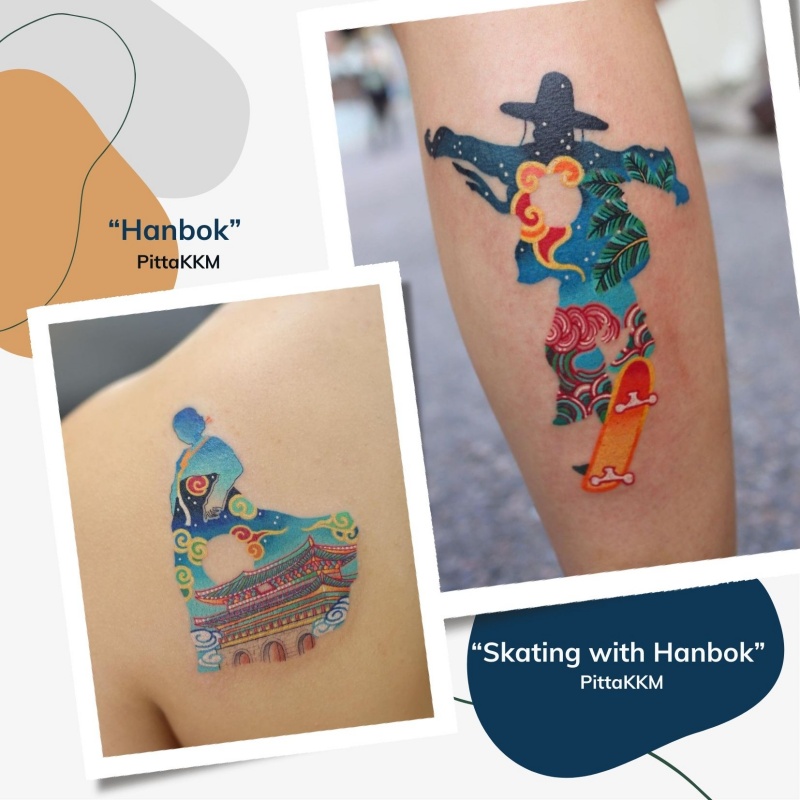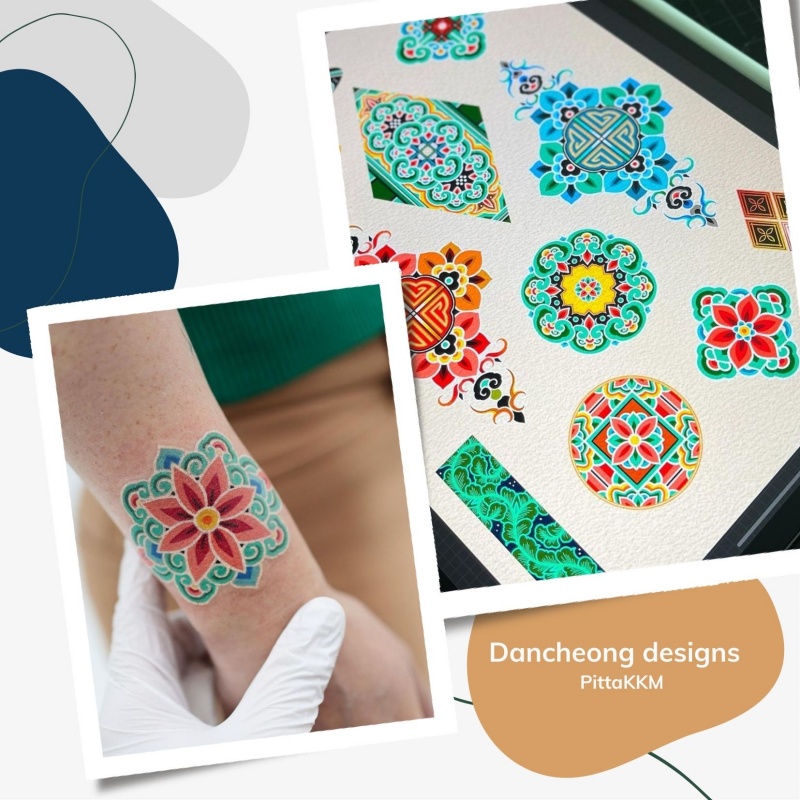- 한국어
- English
- 日本語
- 中文
- العربية
- Español
- Français
- Deutsch
- Pусский
- Tiếng Việt
- Indonesian
By Honorary Reporter Dayviana Diaz from Cuba
Photo = Dayviana Diaz, Kim Jeong Hyun
Dancheong is a distinctive traditional style of decorative coloring in Korea used on wooden buildings and artifacts. It features the colors blue, white, red, black and yellow to reflect the yin and yang principle and the Philosophy of the Five Elements of metal, water, wood, fire and soil.
Kim Gyeong-mo (PittaKKM) is a famous tattooist in Seoul who since 2015 has preserved and used dancheong to express his art on the bodies of his customers. Most of his clients are foreign nationals or ethnic Koreans from abroad.
The following are excerpts from an interview with the artist.
Have you had any academic training in tattoo art?
Not really, I'm mostly self-taught. But I got as many tattoos as I could to learn from professional artists before I started doing tattoos. I also attended an art high school and graduated from the University of Seoul with a bachelor's in environmental sculpture.

These patterns are from Kim Gyeong Mo's dancheong tattoo designs "Hanbok" and "Skating with Hanbok."
How do you describe your style?
I would say a "modernized tradition of Korea." I don't just copy Buddhist art, I adapt it and introduce new features and colors to make it my own.
What would you say differentiates your works from those of others?
When I started dancheong, no one before had used designs using traditional Korean colors. I try to make dancheong look as best as it can on human skin. I think these are the most distinct aspects of my tattoos and what differentiates my stuff from others.

These are Kim Gyeong Mo's most popular designs using dancheong.
Why did you use traditional Korean patterns and dancheong in your tattoos?
I didn't "decide to use" those patterns and colors since I drew them soon after falling in love with them. I grew up in a Buddhist family and visited a lot of temples in my childhood. My grandfather works at Naksansa Temple, one of the biggest Buddhist temples in Korea, as a kind of missionary. So I got inspired by these beautiful colors and wanted to get Korean art tattooed on my body, so I put them in my artwork.
Which of your tattoos is especially dear to you?
I personally don't put any meaning in visual arts, and the same goes for my tattoos and artwork. I usually just enjoy tattoos as they remind me of the great memories I have in making them.
Are tattoos in Korea considered art or fashion?
It depends on region, and the area I'm living in is one of the country's biggest for art and music, and tattoos are so common here. Yet tattoos are considered taboo in other places in Korea.
What advice do you have for people wishing to get a tattoo in Korea?
Find artists that match your taste, don't think deeply about meaning and leave most of the visual parts to artists. Let them recreate your dreams.
enny0611@korea.kr
*This article is written by a Korea.net Honorary Reporter. Our group of Honorary Reporters are from all around the world, and they share with Korea.net their love and passion for all things Korean.